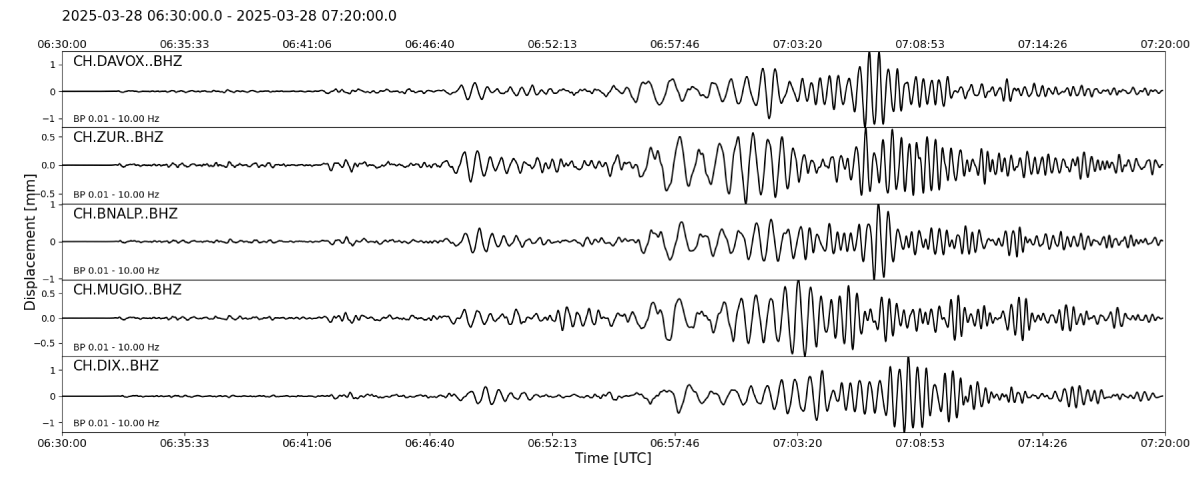2025-03-28
Devastating earthquake in Myanmar
On 28 March at 12.50 local time (07.20 Swiss time), a 7.7 magnitude earthquake struck Myanmar at a depth of approximately 10 to 20 kilometres, about 20 kilometres west of the city of Mandalay.
Shortly after this earthquake, a series of aftershocks with magnitudes between 6.4 and 4.5 occurred within a radius of about 70 km around the epicentre. It is likely that more aftershocks, even larger ones, will follow. There is a small chance of an even larger event with a magnitude greater than 7.7.
Significant damage has been reported in the region, including the collapse of a bridge and buildings in Mandalay. The epicentral intensity is estimated at VIII, which corresponds to strong shaking causing moderate to severe damage. Damage was also reported in Bangkok, some 1,000 km away, and in the southern Chinese province of Yunnan. A large number of fatalities must be expected. A clearer picture is likely to emerge as the situation develops.
The earthquake occurred on the Sagaing fault, which crosses Myanmar roughly from north to south. It is part of a tectonically very active structure that marks the boundary between the Indian and the Eurasian plate. Earthquakes of this size rupture an area 165 km long and up to 20 km deep. Since 1900, six other earthquakes of magnitude 7 and above have occurred in this region within a radius of about 250 km of the 28 March earthquake. The most recent of these was a 7.0 magnitude earthquake in January 1990.
The ground shaking caused by today’s earthquake was significant, with a horizontal peak ground acceleration estimated around 20 %g (1/5 of gravity acceleration) in the vicinity of the rupture; even as far as 100 km away from the source, the peak ground acceleration is expected to have been large (5% g, or 1/20th of gravity acceleration).
People who had planned to travel to Myanmar or neighbouring countries should expect direct effects of the earthquake (e.g. damage to buildings or transport routes) in the epicentre area and border regions. In addition, further aftershocks, some of which may be strong, are possible and may be felt or even cause damage in more distant areas. Contact your tour operator and follow the instructions of the local authorities.

The seismic stations in Switzerland also recorded the earthquake.
